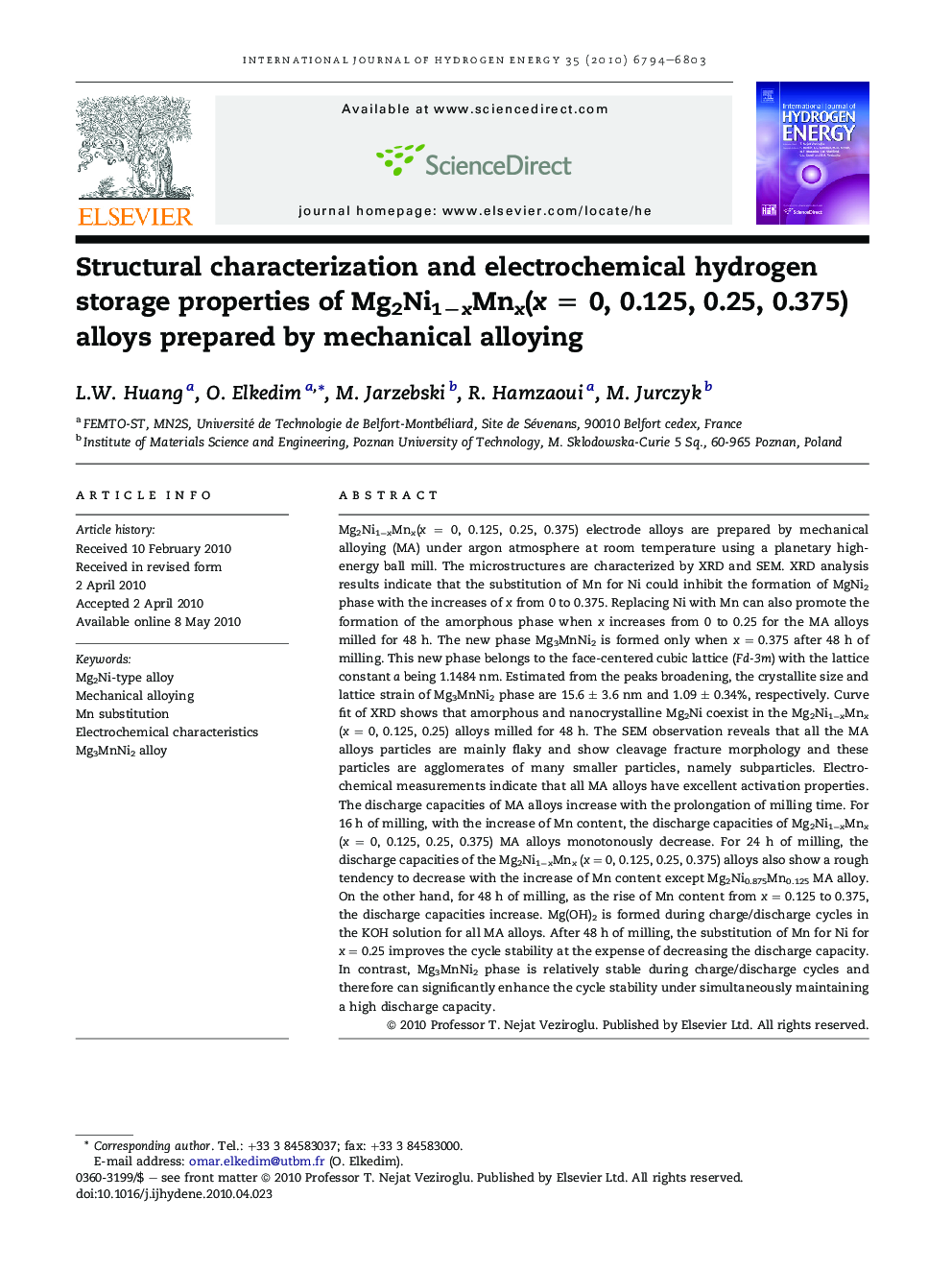| کد مقاله | کد نشریه | سال انتشار | مقاله انگلیسی | نسخه تمام متن |
|---|---|---|---|---|
| 1272917 | 1497604 | 2010 | 10 صفحه PDF | دانلود رایگان |

Mg2Ni1−xMnx(x = 0, 0.125, 0.25, 0.375) electrode alloys are prepared by mechanical alloying (MA) under argon atmosphere at room temperature using a planetary high-energy ball mill. The microstructures are characterized by XRD and SEM. XRD analysis results indicate that the substitution of Mn for Ni could inhibit the formation of MgNi2 phase with the increases of x from 0 to 0.375. Replacing Ni with Mn can also promote the formation of the amorphous phase when x increases from 0 to 0.25 for the MA alloys milled for 48 h. The new phase Mg3MnNi2 is formed only when x = 0.375 after 48 h of milling. This new phase belongs to the face-centered cubic lattice (Fd-3m) with the lattice constant a being 1.1484 nm. Estimated from the peaks broadening, the crystallite size and lattice strain of Mg3MnNi2 phase are 15.6 ± 3.6 nm and 1.09 ± 0.34%, respectively. Curve fit of XRD shows that amorphous and nanocrystalline Mg2Ni coexist in the Mg2Ni1−xMnx (x = 0, 0.125, 0.25) alloys milled for 48 h. The SEM observation reveals that all the MA alloys particles are mainly flaky and show cleavage fracture morphology and these particles are agglomerates of many smaller particles, namely subparticles. Electrochemical measurements indicate that all MA alloys have excellent activation properties. The discharge capacities of MA alloys increase with the prolongation of milling time. For 16 h of milling, with the increase of Mn content, the discharge capacities of Mg2Ni1−xMnx (x = 0, 0.125, 0.25, 0.375) MA alloys monotonously decrease. For 24 h of milling, the discharge capacities of the Mg2Ni1−xMnx (x = 0, 0.125, 0.25, 0.375) alloys also show a rough tendency to decrease with the increase of Mn content except Mg2Ni0.875Mn0.125 MA alloy. On the other hand, for 48 h of milling, as the rise of Mn content from x = 0.125 to 0.375, the discharge capacities increase. Mg(OH)2 is formed during charge/discharge cycles in the KOH solution for all MA alloys. After 48 h of milling, the substitution of Mn for Ni for x = 0.25 improves the cycle stability at the expense of decreasing the discharge capacity. In contrast, Mg3MnNi2 phase is relatively stable during charge/discharge cycles and therefore can significantly enhance the cycle stability under simultaneously maintaining a high discharge capacity.
Journal: International Journal of Hydrogen Energy - Volume 35, Issue 13, July 2010, Pages 6794–6803